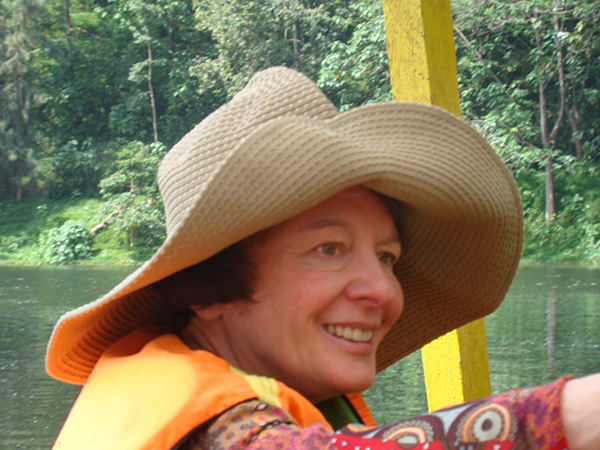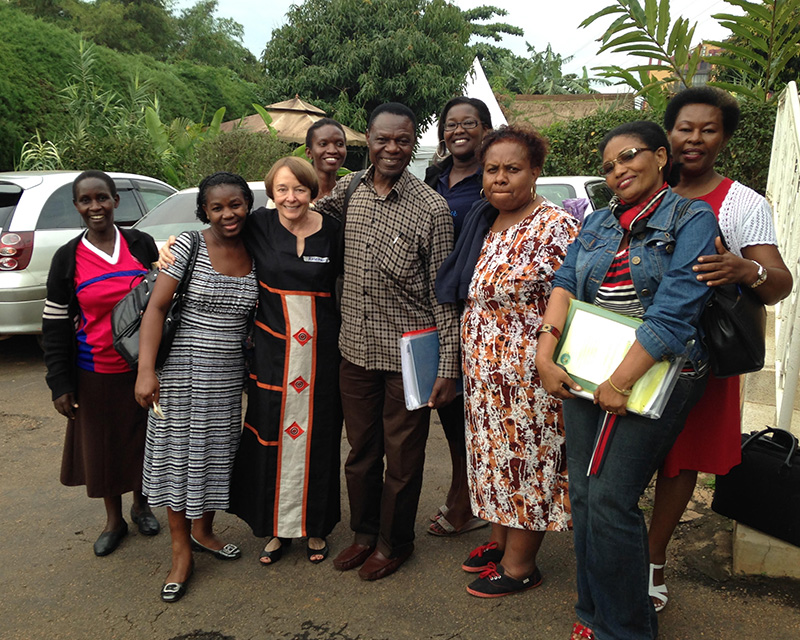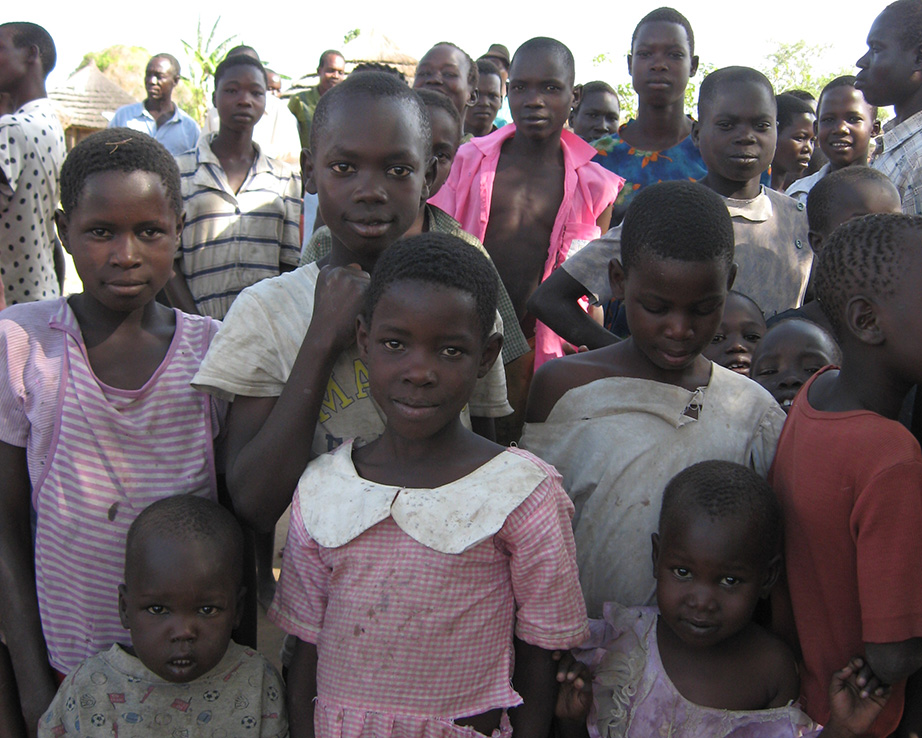My Professional Journey
I began my professional life as a lawyer. I worked at the Vera Institute of Justice where my assignment was to help develop programs that could lead non-violent offenders out of the criminal justice system and into programs that offered viable alternatives to dealing drugs and petty crime. These programs were helpful to many, but there were also many who couldn’t move on because they suffered from a variety of mental health disorders.
Years later I would realize that many of those disorders were caused or worsened by experiences of childhood abuse and neglect and adult experiences of violence and terror. At the time I just knew I didn’t know enough. I wondered, what prevented intelligent people from escapting the repetitive cycle of crime, arrest and incarceration? I decided to get a masters degree in social work and learn more.

My first job after completing my MSW brought me back into criminal justice work, I was recruited by the New York City Victim Services Agency to develop and direct the first support and treatment program in the United States for families of homicide victims. Running that program was where I first encountered what happens to people who experience an overwhelming stress like the violent death of a child. The idea that people with symptoms of psychological trauma suffer from a discrete psychiatric disorder was just beginning to filter into the mental health system, It was clear to me that many of the parents I worked with suffered from many of the same symptoms as Vietnam combat veterans and rape survivors. The problem back then was that there was no clear path as to how to help individuals heal from the nightmares, flashbacks, hyperarousal and hopelessness that result from traumatic stress. The best I could do was fulfill the Hippocratic admonition, “First do no harm.” I helped parents of murdered children be less self-critical of symptoms over which they had no control but that was about it. Many got better anyway and were grateful that at least I understood what they were going through.
After a few years, I moved on and got trained as a psychoanalyst and family therapist. No question that these are excellent treatment models that help many people, but what I learned from using them was that they were not especially useful when it comes to treating adult survivors of rape, assault and the violence of war. These treatment approaches were even less effective when it came to understanding and helping people with histories of severe childhood abuse and neglect. I was inevitably drawn back to the trauma field in the 1990’s after learning about the work of Judith Herman, and Bessel van der Kolk. I immediately recognized that approaching mental health disorders through the paradigm of traumatic stress would revolutionize the practice of psychotherapy.
A few years later, I encountered the work of Stephen Porges. Porges asserts, as do most experts in psychological trauma, that when the human brain perceives danger, the neural circuits that allow us to speak, hear, even think logically, go off line. Faced with threats to our survival, we humans default to flight and fight strategies. What was truly groundbreaking for me about Porges’ work was his insight that successful efforts to calm an agitated person require us to communicate to the agitated person’s brain that things are safe enough to pause and think through options. The purpose of eSCAPe’s four interventions is to do just that.
The Day New York City Discovered Psychological Trauma
Following the horrific events of September 11, 2001, virtually every New Yorker reacted the way humans do when subjected to unforeseen, life-threatening danger to ourselves or someone we care about. Some of us experienced poor concentration and irritability. Some of us would flinch at the sound of a low flying air plane. While most of us felt better after a few weeks, some, especially those living near the World Trade Center, developed full blown P.T.S.D.
The time was right to bring psychological trauma into the the mental health mainstream. Informed and energized by my work with families of homicide victims and torture survivors, I took the lead in rallying a group of New York City trauma-informed psychotherapists. We began by providing support to employees of a company that had lost 300 hundred of their co-workers. As things settled back to normal (sort of), the group decided to meet regularly, partly to learn more about trauma and partly to figure out what constructive actions we could take in response to the tragedy.
After several months of grumbling about the sorry state of mental health and mental health training in America, we decided we were ready to take action. We created the Trauma Studies Center as a division within the Institute for Contemporary Psychotherapy (ICP) in New York City. Since its inception the Trauma Studies Center has offered trauma focused treatment through ICP’s adult treatment clinic. In 2005 the Center inaugurated a two-year Integrated Trauma Studies Program that trains mental health professionals how to diagnose, and treat survivors of psychological trauma. The program’s synthesis of theory and clinical experience is respected as one of the most rigorous and comprehensive trauma training programs in the country. I was privileged to serve as the Trauma Studies Center’s first Director.
A Life-changing Opportunity
My work as an educator in the field of psychological trauma opened what was for me a life changing opportunity to teach trauma theory overseas. Pilgrim Africa, an indigenous humanitarian services organization, invited me to teach about psychological trauma to human services workers in Uganda’s Teso region, an area that had been ravaged by the Lord’s Resistance Army an ill-trained, violent rebel group opposed to the ruling government.
Among the participants in the classes I taught were nurses, police, emergency medical workers, teachers, pastors, even correction officers from the local prison. They were all people whom today I consider to be frontline workers. Although untrained as mental health workers, they were dedicated, intelligent people whose work required them to provide services to traumatized people who were often angry, volatile, illogical or desperate.
My colleagues asked for a list of things to say that can calm an angry or terrified person.

There aren’t enough mental health professionals to cure everyone who blows up over nothing.

Participants described their frustration in trying assist survivors of Uganda’s violent and terrifying civil war. They reported how attempts to help someone could unexpectedly devolve into illogical, furious exchanges that thwarted their well intentioned efforts. Sometimes they succeeded in calming people down. Sometimes the result was a futile upsetting interaction which left the workers embarrassed and bystanders demoralized. Participants asked me if I had a list of things they should say and steps they should take to deescalate these ugly situations. I had to admit I did not have a simple recipe that they could follow.
Members of the Uganda Counselling Association to whom I taught EMDR, a trauma focused psychotherapy, reinforced what frontline workers in Teso had already told me. There simply were not enough and never would be enough mental health professionals in Uganda to “cure” everyone who blows up over nothing. On the plane ride home, I reluctantly acknowledged to myself that what is true in Uganda is just as true in the United States.
My Ugandan colleagues had shown me that in unstable societies where traumatic stress is widespread, helping people one by one is not going to make much of an impact. We are in such times in the U.S. right now, What we need are public health solutions. We need actions that aim to improve the health and quality of life for entire communities not just individuals. We need interventions that turn down our volatility especially in public spaces. I thought about the Ugandan frontline workers and how they had asked me for some kind of checklist. They needed tools they could use to calm people who are on the edge of disrupting what should be an ordinary transaction with overwrought emotions and unreasonable behavior.
The Creation of the eSCAPe Protocol
Shortly after my return from one of my trips to Uganda, I met Christine Alvarez, head of the nationally respected LaGuardia Community College EMT and paramedic training programs, Christine and I discovered we had common concerns. We saw that frontline workers are critical to any effort to foster reason and civility in American society. What, we asked each other, keeps public spaces civil? What should we teach workers who serve in public situations to do? What quiets the desperation that fuels angry people? Our shared question, how to deescalate interactions between front line workers and the people they serve, was the catalyst for a joint project between the Trauma Studies Center and the LaGuardia Community College EMT and paramedic training program.
Starting in 2011, ICP and LaGuardia Community College launched a seven-year collaborative study that you can read more about in the About eSCAPe page. To put it in a nutshell, what we discovered is this: There are four interventions that, consistently employed, can deescalate the intensity of the anger, humiliation, and terror experienced by all of us from time to time. and by some of us more than others. Equally important, the team developed a method to teach this knowledge so that it really sticks. Christine Alvarez, and I are justly proud of the multi-disciplined, collaborative effort that has led to the creation of the eSCAPe Protocol. We know for certain that a central challenge of our time is how to restore reason and civility to human society. We are dedicated to letting our colleagues, friends and fellow citizens know that there are answers to this challenge and eSCAPe is one path to achieve it.
